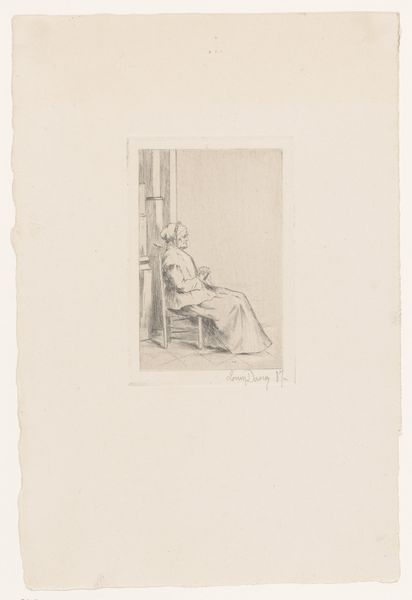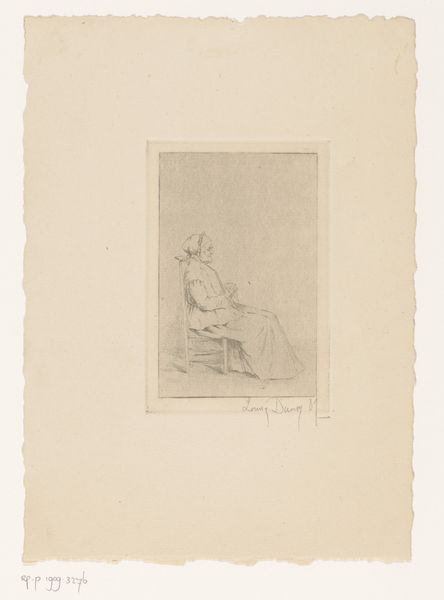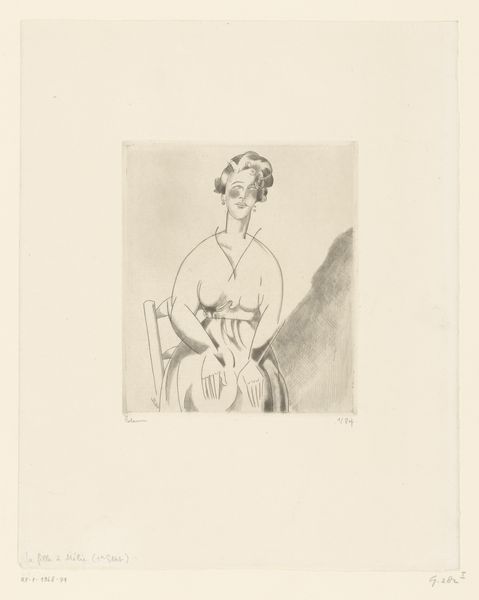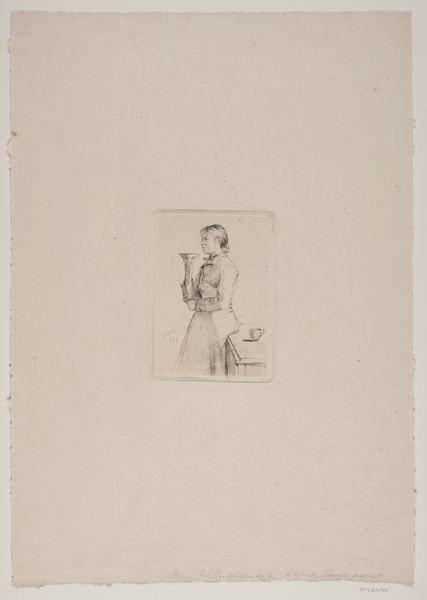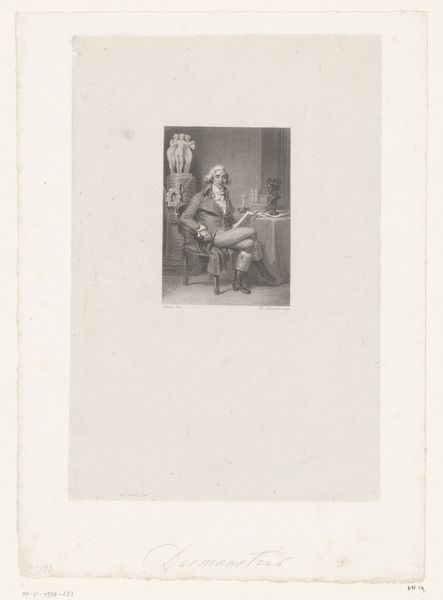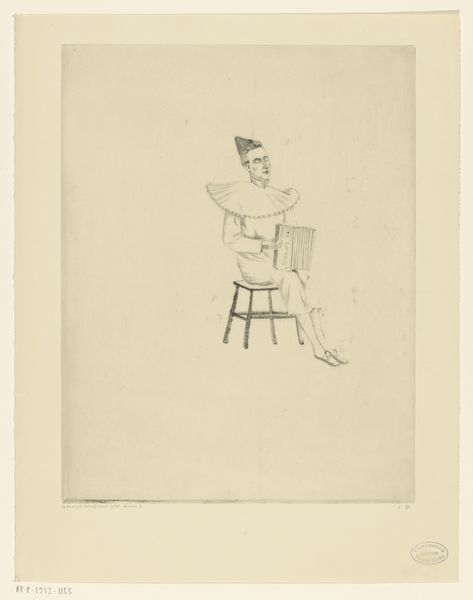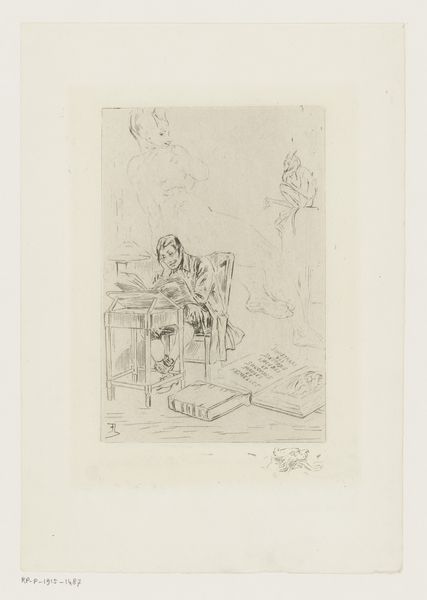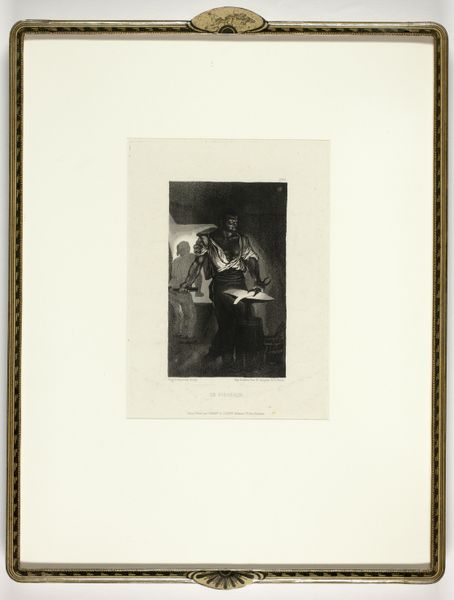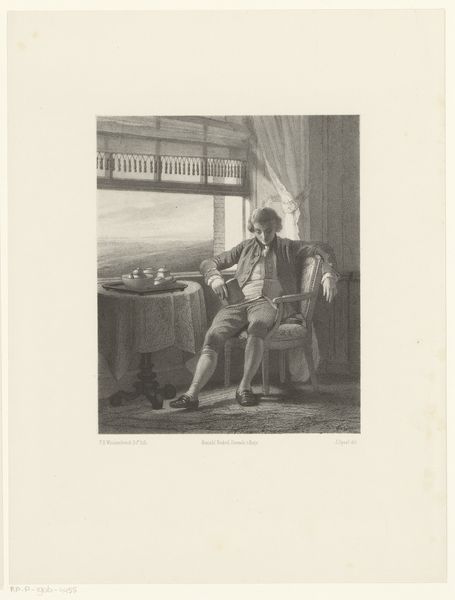
drawing, etching
#
portrait
#
drawing
#
self-portrait
#
etching
#
german-expressionism
Dimensions: height 180 mm, width 120 mm
Copyright: Rijks Museum: Open Domain
Curator: Let's delve into this self-portrait by Max Slevogt. Created around 1911, it's an etching currently residing in the Rijksmuseum. Editor: Immediately, I'm struck by how casual it feels, like catching someone completely absorbed in their work. There’s a real sense of intimacy here. It reminds me a little of Degas somehow but more nervous. Curator: Yes, and this informality is so central to Slevogt's artistic approach. He breaks away from academic tradition in his raw, candid self-representation. It shows his embrace of German Expressionism and its focus on internal emotional states. I also see a challenge to conventional portraiture. Editor: He’s perched rather precariously on that simple wooden stool, suit jacket unbuttoned. All those sketch-like lines give an impression of flickering light, like it's a fleeting moment he's capturing, the act of creating something balanced against an air of instability, or just…well, impatience! Curator: The medium, etching, amplifies this sense of immediacy. He's depicting himself in the act of creation; literally, engraving, capturing not just his likeness but also his artistic process. We could consider this against the backdrop of increasing industrialisation. His devotion to manual skill resists prevailing ideas about modern progress. Editor: Do you think the fact that he’s creating a portrait adds an extra layer to it? Like a snake eating its own tail, or staring into a mirror to infinity. Is it possible to see something that way and still know who he really is? Curator: It raises fundamental questions about the artist's identity, doesn't it? Who are we when we are performing art, when we examine our own existence? It speaks to the intellectual currents of the time: exploring interiority and questioning subjectivity through the lens of artistic production. I can certainly say I love that questioning stare… Editor: And now you've explained all of that it means that for me too. Thanks, this was definitely revealing. Curator: Likewise. The way we see art is perpetually open to reinterpretation when approached with the willingness to learn from different perspectives.
Comments
No comments
Be the first to comment and join the conversation on the ultimate creative platform.
